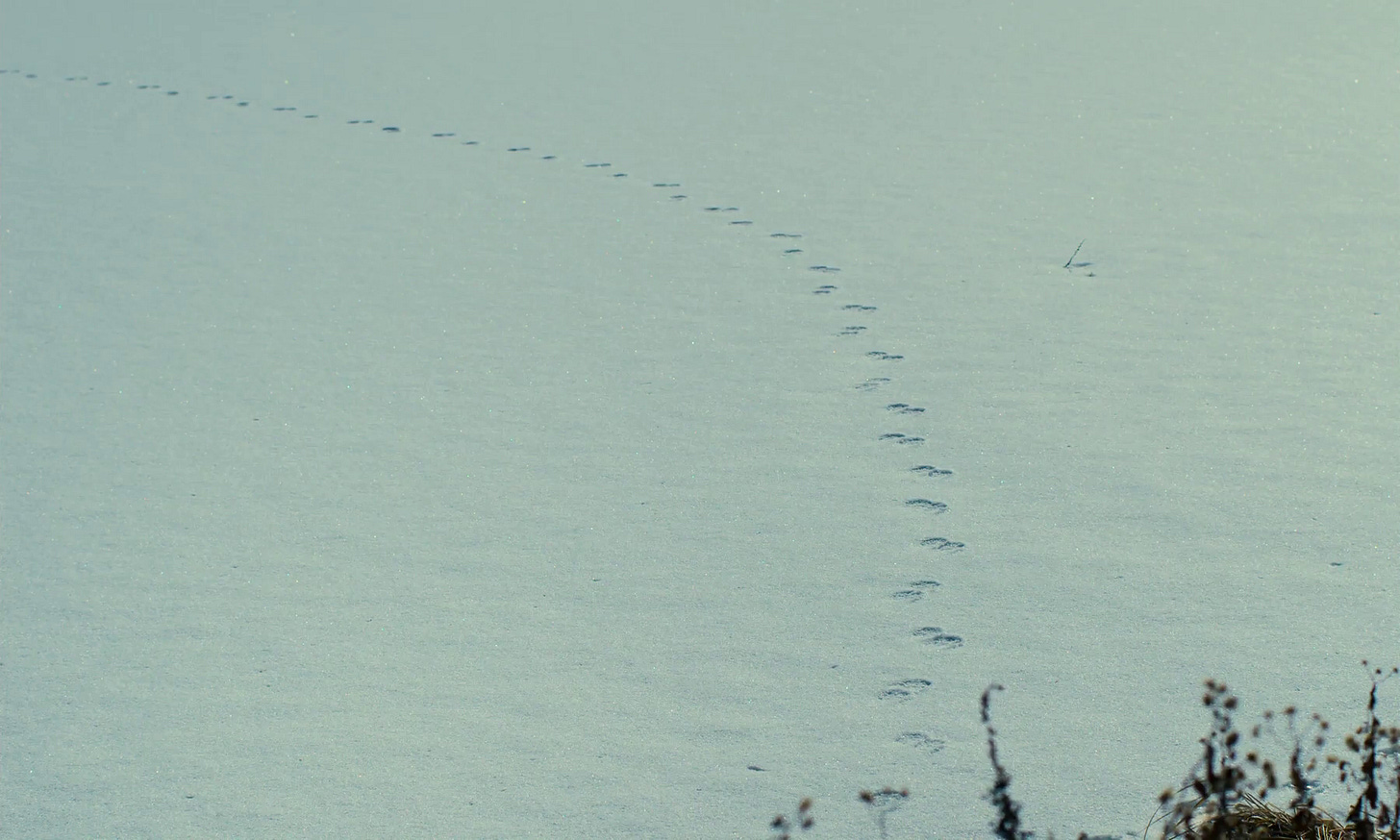In Evil Does Not Exist, the tranquility and self-sustainability of a remote forest village outside of Tokyo is in danger of being compromised by a large corporate interest from the city — a glamping development. The film follows Takumi, a man-about-town whose myriad of small but important tasks seem to keep a community afloat — in basketball parlance, a glue guy. The final third of the film introduces a suspense mechanism, as Takumi’s daughter goes missing in the woods while the visiting representatives from the glamping site are getting a lay of the land. If the bones of the plot sound familiar, it’s because this is essentially structured like so many classic Westerns that were about the end of the old west, where the march of progress rolls its stagecoach of modernity into town, kicking up clouds of dust over a traditional population. However, the preservationist approach places it in a far different canon from Once Upon a Time in the West’s literalist train tracks toward the future.
The film is notably slower than the last few Rysuke Hamaguchi outings. That’s not to say Drive My Car, Wheel of Fortune and Fantasy, or Asako I & II aren’t deliberate films, but the pace here announces itself from the opening tracking shot through the trees in a way that wasn’t quite so obvious in the aforementioned trio of dramas. Scenes of Takumi going about his daily tasks are shot and cut with a patience that extends beyond neorealism and into stylization. It’s not the slow cinema of an Apichatpong Weerasethakul or Tsai Ming-liang, but it is nonetheless a durational approach that directly informs its ecological concerns. The viewer is forced to savor the trees, and the banks of fog that roll through them, because they may not be there much longer. In 1947, a decaying D.W. Griffith said that “What the modern movie lacks is beauty — the beauty of moving wind in the trees”.
Hamaguchi is far from the first filmmaker to use this quote as motivation (one of his inspirations, Andrei Tarkovsky, is arguably the master of Wind in the Trees Cinema), but his camera’s curious exploration of a remote community’s potential last days before the city bowls it over with the progress of glamping harkens back to the grand ideas of early cinema, particularly of King Vidor’s Our Daily Bread from 1934 (a “back to the land” collectivist parable) and Dovzhenko’s Earth from 1930 (a Soviet farming propaganda piece). These films obviously long predate durational arthouse films and the slow cinema movement, but are in the same political playground as Evil Does Not Exist — the contrasting lifestyles of the urban and the rural as dictated by capital, or in Dovzhenko’s case, the lack thereof.
If the preceding paragraph implies that Evil Does Not Exist delivers a “back to the land” message, I must point you to the fate of Takahashi, a talent agent and liaison between the people of Mizubiki and the glamping developers, and Hana, the curious daughter of Takumi. Caught in the middle, Takahashi observes Takumi’s life of chopping wood and carrying water as tranquil, even virtuous, and declares that he would like to work and live in the village, as the caretaker of the glamping site. Like a character in a postcolonial narrative, Takumi toys with the self-conscious settler’s obvious condescension until he reaches a breaking point at the film’s fateful, violent climax.
While a contemporary urban/suburban audience may see Hana’s wandering home through the woods as parental negligence, her natural curiosity isn’t what kills her. It is everything that we have done to the earth, long before she was born. She is of a generation that will not be able to grow old in a traditionally inhabitable earth — if there is any chance of surviving an impending climate apocalypse, human life would have to be anything but traditional. The film isn’t necessarily punishing Takahashi for wanting to leave his corporate Tokyo job for a life in the woods, nor is it lauding Takumi’s violence. It is simply too little and too late for this community, this man, his child, and this earth. Evil does exist, and its counterpart is the green planet. All we can do now is appreciate the natural beauty that hasn’t yet been destroyed.








